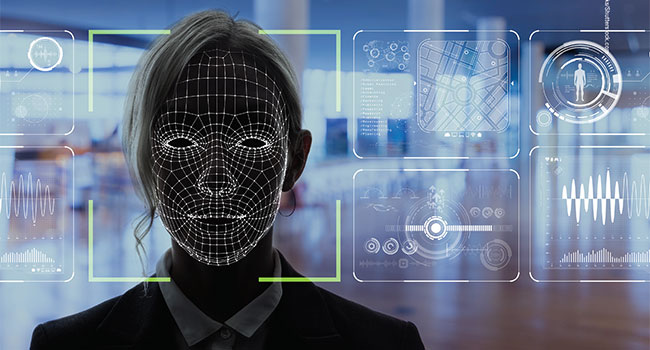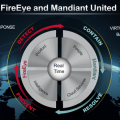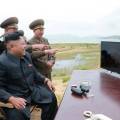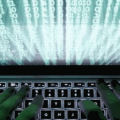There has been a bunch of recent press regarding concerns over facial recognition technology. Examples include
- John Oliver – https://www.youtube.com/watch?v=jZjmlJPJgug
- Threatwire – https://www.youtube.com/watch?v=Wv7pegbSNtI&feature=em-uploademail
In summary, the laws are not clear regarding how this technology is and will be used. In the movie Minority Report, it was eyeballs being scanned as you went about your daily life however, it looks like facial recognition may function in a similar manner. Imagine walking into a Gap and having a customized greeting along with recommendations based on your previous shopping habits … or maybe even shopping habits from other stores. We see this behavior already with online shopping. When you surf the web, websites analyze cookies within your browser to adjust marketing based on your interest. Some people enjoy this as it saves them time finding things of interest. Others find this intruding into thier privacy.
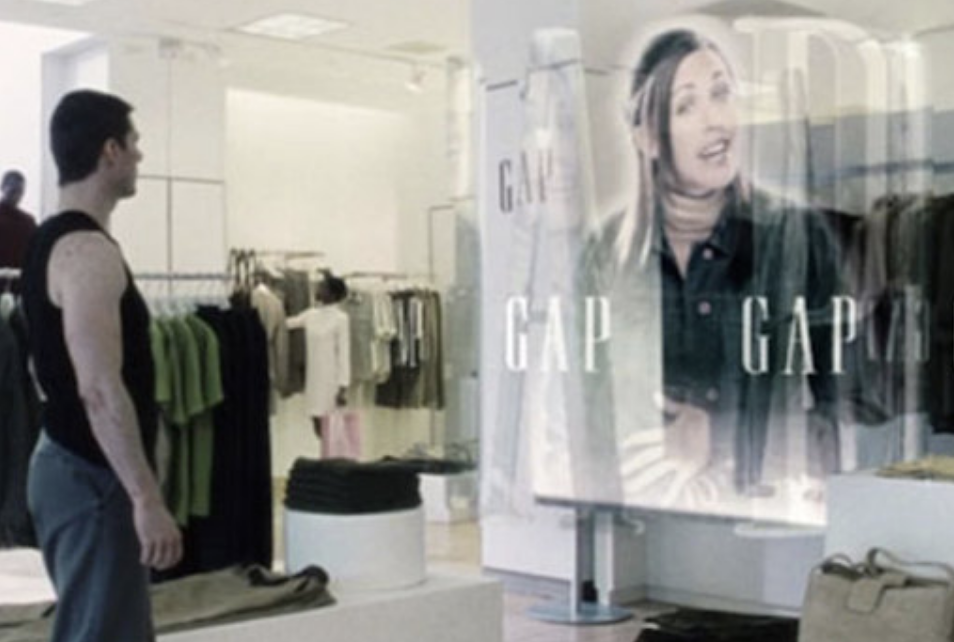
There are many interesting use cases such as gathering information about somebody you are about to meet to better understand their interest however, does that also violate their privacy? This is the interesting part because a lot of the content being pulled based on your facial scan is publicly available details being scrapped from sources such as social media. Does that make it ok? I found John Oliver’s example of a dating app, which you take a picture and it pulls everything about a person a bit creepy and unethical. The whole point of the first date is to learn about the person vs cyber stalking them. This fine line of what should be allowed to be pulled based on scanning a face is the battleground between privacy and technology innovation. In the USA, we are battling this out right now while countries like China have already committed to the technology.
I found the piece on josephsteinberg.com a good summary of what you can do to reduce the chance of a facial recognition technology to successfully capture your face. That original post can be found HERE. Here is that post.
Yesterday, The New York Times ran an alarming piece by Kashmir Hill about Clearview AI, a startup that allows third parties to quickly learn many details about you based on only seeing your face; The New York Times further reported that Clearview’s technology is already in use by government agencies across the United States. (While various other technology firms have likely had the ability to offer similar systems for several years, they have refrained from doing so.)
Today, therefore, I am sharing some tips on how to prevent yourself from being recognized by facial recognition systems. I have personally utilized some of these techniques in test environments – and they worked. Others I have seen demonstrated.
Keep in mind that not all of the tips that I provide below apply in all environments – normally, people seeking not to be recognized also do not want to stand out. So, if you do not want to be recognized, utilize the techniques that allow you to best remain inconspicuous, while simultaneously giving current-day facial recognition systems a run for their money.
I should note that I believe that legislation is the ideal way to address the privacy concerns created by ubiquitous facial recognition systems, and that I wonder if existing systems, such as the one discussed by The NY Times, already run afoul of GDPR and other regulations. But, until privacy is far better assured than it is today, the following techniques might be of great benefit – as they seek to undermine facial recognition technology through a number of methods including tricking it into thinking that your face is not a face, or that your face does not look the way that it actually does:
1. Style your hair and apply makeup wisely
Style your hair and apply your makeup in ways that undermine the ability of facial recognition systems to analyze facial features.
The first goal in this regard is to utilize hair or makeup in ways that substantially block portions of your face (especially your the eyes, nose, and forehead and the location where these features intersect), and that, thereby, cause many facial recognition systems not to realize that your face is a face – so they don’t even try to match and identify it.
Keep in mind that when light hits people’s faces, it lights up our noses, eyebrows, and cheekbones more than it does our eye sockets; the former are prominent on our faces, and the latter are shadowed by the upper portion of our faces. If you use makeup to darken the former, and to lighten the latter, it can help confuse facial recognition systems. While doing so may sound simple, it is actually the opposite of the typical way humans apply makeup in the Western world.
You can also use makeup to confuse recognition systems that do determine that your face is a face – if you have light skin, consider applying darker colors of foundation, and if you have darker skin consider applying lighter colors. Also, apply concealer over any scars, moles, tattoos, or other identifiable marks. Apply makeup that changes the contrast of light to dark – not only in terms of what is light and dark, but also as to how quickly skin and features visibly change from one to other as one scans your face.
Also, keep in mind that while people’s faces are never perfectly symmetrical – and facial recognition systems know that and measure various variations in symmetry – many facial recognition technologies have difficulty creating matches when there are significant new asymmetrical elements introduced in a test subject. Increasing artificial asymmetrical elements – e.g., applying an unusually shaped, highly visible makeup pattern on one side of your face, or applying two different patterns on the two sides of your face – can, therefore, improve your odds of avoiding recognition. Likewise, styling your hair in an unbalanced style can improve your odds, as can dying in a contrasting color to the rest of your hair a small portion of your hair that hangs in front of your face on only one side of your body.
Not all of these makeup and hair style options will be practical in all environments – but, the more that you utilize, the greater your chances of avoiding detection. And, obviously, in any case, do not utilize any makeup that enhances your features.
2. Prevent cameras from seeing your nose, eyes, and forehead – and especially the area at which they meet
As much as possible block from any cameras’ views of the part of your face where your eyes, nose, and forehead meet – that area weighs disproportionately in many facial recognition algorithms. If you have sufficient hair to create bangs that cover that area – create them. If not, and the situation allows for it, wear a wig that can be used for such a purpose. If not, utilize clothing – a hoodie, for example, can do the job.
3. Prevent cameras from seeing the shape of your lips
Facial recognition systems also tend to disproportionately analyze people’s lips – if you have a mustache or beard grow it long enough to cover the top of your upper lip. Consider modifying the shape of your lips slightly by using lip-colored lip liner around portions of their exterior, and even using concealer on small portions of your lips to create the impression that such areas are non-lip facial skin.
4. Wear a hat with a brim – and keep your head down as you walk
Baseball hats are ideal as they both obscure the shape of your head as well as block your face from being seen by ceiling-mounted cameras when you tilt your head down, but fedoras with sizeable brims can work as well. If your ears are not otherwise covered, you can benefit from tucking their tops into the hat.
5. Prevent the camera from seeing one or both of your eyes
Facial recognition systems look at many aspects of people’s eyes – shape, position, size, color, distance between (see #3 above), etc. Ideally, block cameras from seeing any portion of your eyes, but, blocking even one eye can sometimes be sufficient to entirely undermine facial recognition systems; the systems may not even realize that your face is a face. Also, consider wearing reflective sunglasses that incorporate technology to reflect infrared light; such glasses can completely obliterate cameras’ views of your eyes and can even create a “glare” that interferes with recognition systems’ ability to see clearly in the areas immediately surrounding your eyes as well. Some such glasses have been available to consumers for a while.
6. Leverage infrared LEDs
Likewise, battery powered infrared LEDs attached to sunglasses and aimed at viewers, or hidden within a hat and aimed at portions of your face, can confuse facial recognition systems that rely on infrared light; such systems may not even realize that they are seeing a face. Yet, the infrared light will be invisible to humans – so it will not be conspicuous.
7. Apply fake features
Having been a magician in my teens, I have seen (and used) various fake body-skin to hide things in plain sight. While the classic fake thumb tip may not confuse facial recognition systems, fake facial skin add-ons – especially if applied asymmetrically or in the key areas mentioned above – can certainly cause recognition technology all sorts of problems. And “Hollywood makeup” type stores often carry a wide variety of such products.
8. Utilize clothing wisely
Wear clothing that helps obscure your face. Besides using a hood/hoodie as described above, if the weather allows for it, wear a scarf – and wear it in a way that the bottom of your face is blocked from being seen by cameras. Various other accessories and jewelry can also help; some systems may even be confused by clothing with realistic photos of faces on them, or with large, complex brightly colored images
9. Grow a beard
Lumberjack beards are in vogue today. Beards alone will not usually trick facial recognition systems, but, they can improve your odds when coupled with other techniques.
10. Wear a de-facto mask
In places where doing so is legal, and where the circumstances would not cause people to think that you are doing so in order to disguise yourself, wearing a de-facto mask can obviously help you avoid detection. During the winter, for example, wearing a balaclava on the street might be possible – but, in many environments, especially when walking indoors, doing so might draw unwanted attention. There are clear masks that are designed to block facial recognition systems – but, they might draw attention to you if not worn under a mask. 3-D printed masks of other people’s faces or of fake faces may also work – but wearing those can be illegal, and, even in places where they are legal, if they are not implemented perfectly, they can be impractical and uncomfortable, and can easily attract unwanted attention.
11. Modify your photos before sharing them online.
There are apps that add various “noise” to photos that is essentially invisible to humans, but makes the images more difficult for facial recognition systems to use in making matches.
Of course, you may want to vary your application of the aforementioned techniques to ensure that your appearance on numerous camera feeds are not connected to one another, even if your identity can not be determined.
